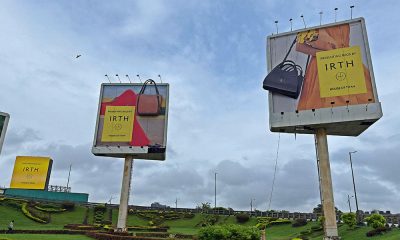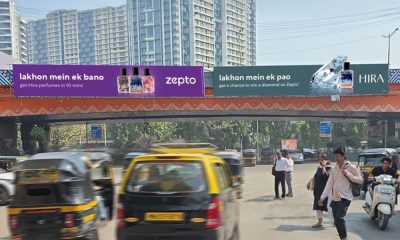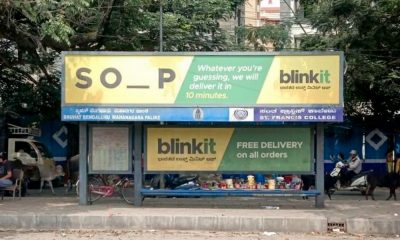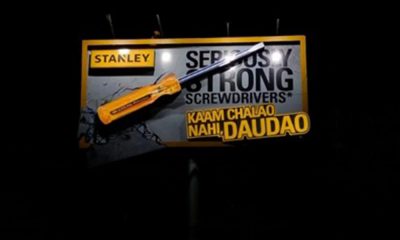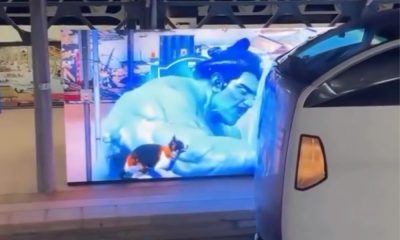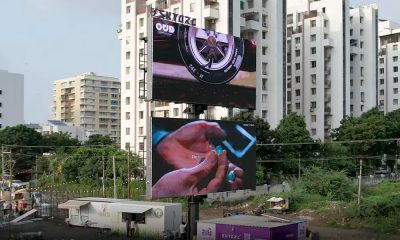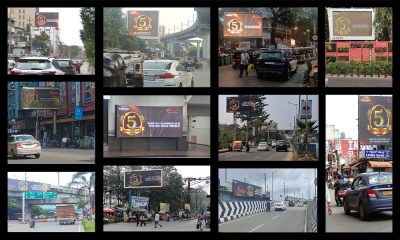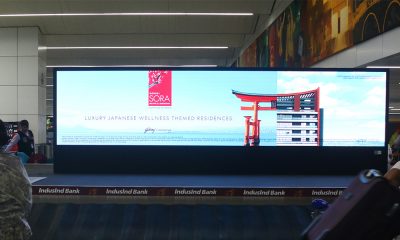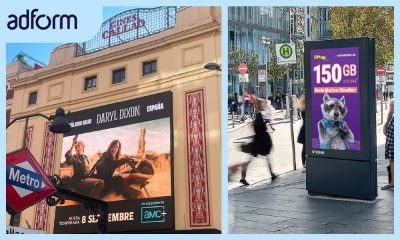Insights
Dipankar Sanyal on the need for iconic OOH destinations in India
Dipankar Sanyal, CEO of Platinum Communications, shared his insights on why India needs its own iconic OOH destinations.

Landmark outdoor advertising sites are more than just commercial displays. They are cultural icons, tourist attractions, and magnets for attention. Globally, places like Times Square in New York, Piccadilly Circus in London, and Yonge-Dundas Square in Toronto have shown how OOH can transcend advertising to become part of a city’s identity. Reflecting on this, Dipankar Sanyal, CEO of Platinum Communications, shared his journey in the OOH industry and why India must begin thinking seriously about creating its own iconic outdoor destination.
Remembering the roots of OOH in india
Dipankar traced his memories back to Mumbai in the late 1990s, when outdoor was dominated by billboards, bus shelters, and neon-lit displays along Marine Drive. “One of the brand heads I worked with once asked, ‘Why don’t we create something iconic like the Coke billboard on Times Square?’ At that time, it felt unrelatable, but the word ‘iconic’ stayed with me,” he said.
He recalled how companies like ITC once raised the bar by creating unique outdoor properties across cities. These weren’t just hoardings — they were structures illuminated and positioned in such a way that they became landmarks for commuters and residents alike. For Dipankar, those moments revealed how OOH could shape not just consumer behaviour but also urban identity.
The evolving definition of “iconic”
Over the years, the meaning of “iconic” in OOH has shifted. Dipankar explained that what once meant dominance within a city has now grown into a global idea, where a site becomes a digital and social media phenomenon. “If it happens to be an iconic one, the collateral benefits it brings along are humongous,” he observed.
Today, iconic OOH is not just about size or location. It’s about cultural relevance, technological integration, and the ability to generate conversations both offline and online. Social media has amplified this effect, turning billboards into backdrops for Instagram posts, Twitter threads, and viral campaigns.
Five pillars of landmark OOH
Dipankar outlined five key factors that make a site iconic.
Impact is the first, driven by scale and visibility. He cited the example of Tata Motors’ 28,000 square feet site on the Pune-Mumbai Expressway, which generated enormous buzz and set a benchmark for size and reach.
Engagement and virality follow. Landmark properties are no longer static spaces but “Instagrammable hotspots,” as Dipankar put it. Integrating live feeds, dynamic visuals, or interactive tech ensures these sites go beyond eyeballs to participation, much like Times Square does globally.
The third factor is storytelling. Large-format sites provide expansive canvases for brands to narrate their stories in bold and creative ways that smaller mediums cannot match.
The fourth is cultural significance. Over time, certain outdoor sites become inseparable from the identity of their locality. Dipankar pointed to Kolkata’s Dunlop More as an example, where a long-removed billboard continues to define the area even today.
Finally, there is the prestige factor. Being present on such a site signals not just visibility but stature. “It shows the world that a brand is bold, successful, and part of the global elite,” Dipankar explained.
Proof from global case studies
To highlight the effectiveness of landmark OOH, Dipankar pointed to international studies and campaigns. Nielsen has reported recall rates exceeding 70% for Times Square campaigns, especially when integrated with mobile and activation. Similarly, Adidas’ Ultraboost campaign at Toronto’s Yonge-Dundas Square drove double-digit increases in flagship store footfalls, showing how iconic locations deliver measurable impact.
These examples, he argued, demonstrate why landmark OOH is not just about spectacle but also about business outcomes.
India’s missing piece
Despite India’s vibrant advertising industry and rapid digital adoption, Dipankar acknowledged that the country still lacks an equivalent to Times Square or Piccadilly Circus. “An equivalent of Times Square or Piccadilly Circus or Yonge-Dundas still remains a distant dream in India. Hopefully someday we will see it,” he said.
For him, the task ahead lies not only in ambition but also in collaboration between advertisers, media owners, and city planners. Iconic outdoor spaces cannot be built in isolation; they require vision, investment, and a recognition of the role OOH can play in shaping a city’s cultural and commercial heartbeat.
Looking ahead
Dipankar believes the potential is there for India to create such landmark sites, driven by its growing economy, youthful population, and expanding cities. “Landmark OOH sites just don’t reach people but involve them. They drive social media participation and create cultural relevance and thereby don’t just remain another advertising space,” he concluded.
For now, Times Square remains a benchmark. But the dream of an Indian equivalent continues to linger – one that could transform not just advertising, but the very experience of urban life.
